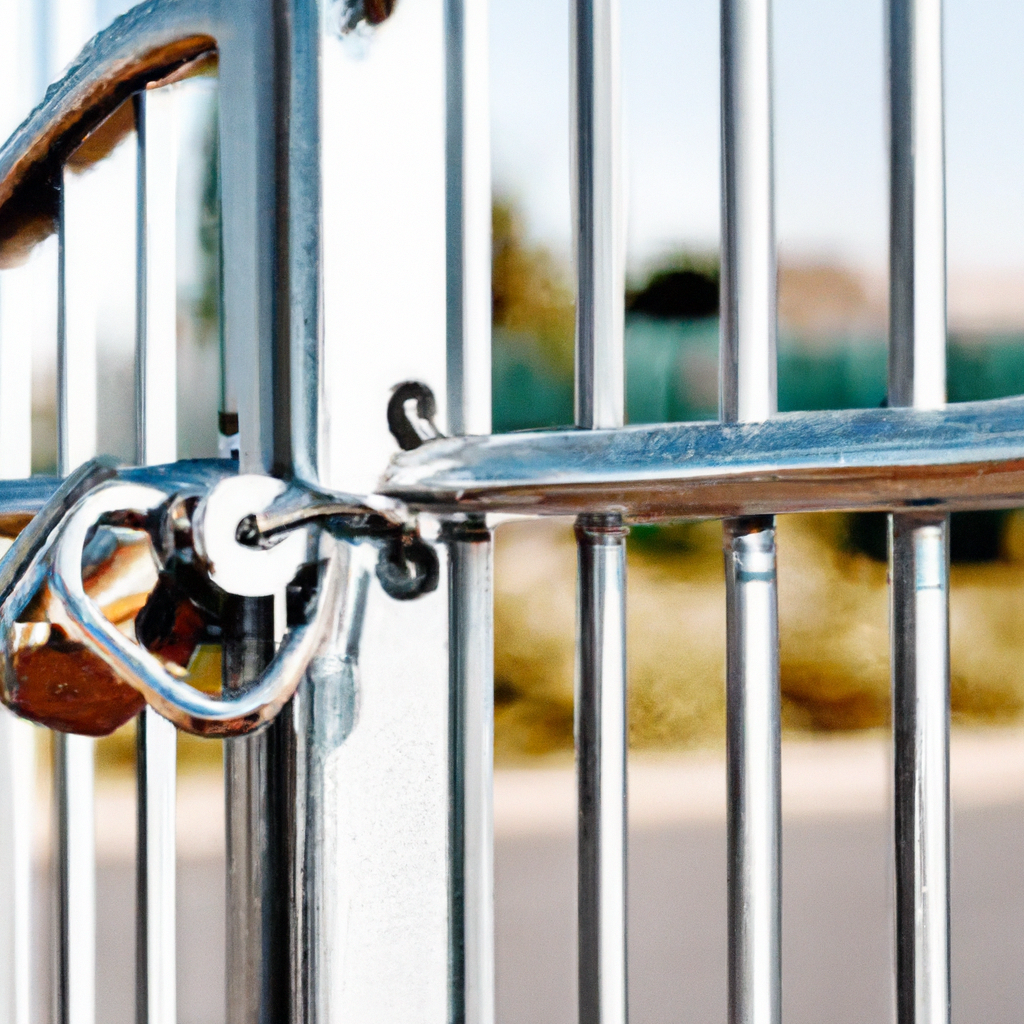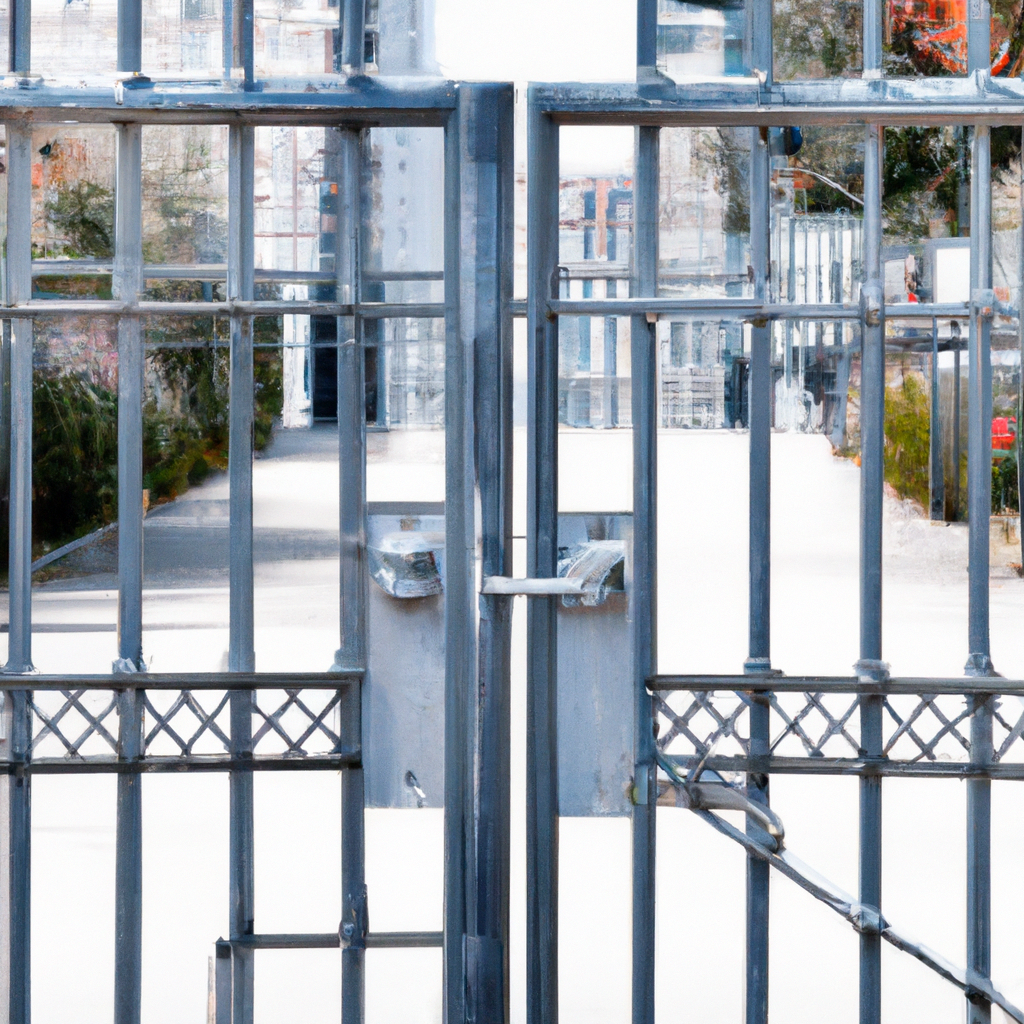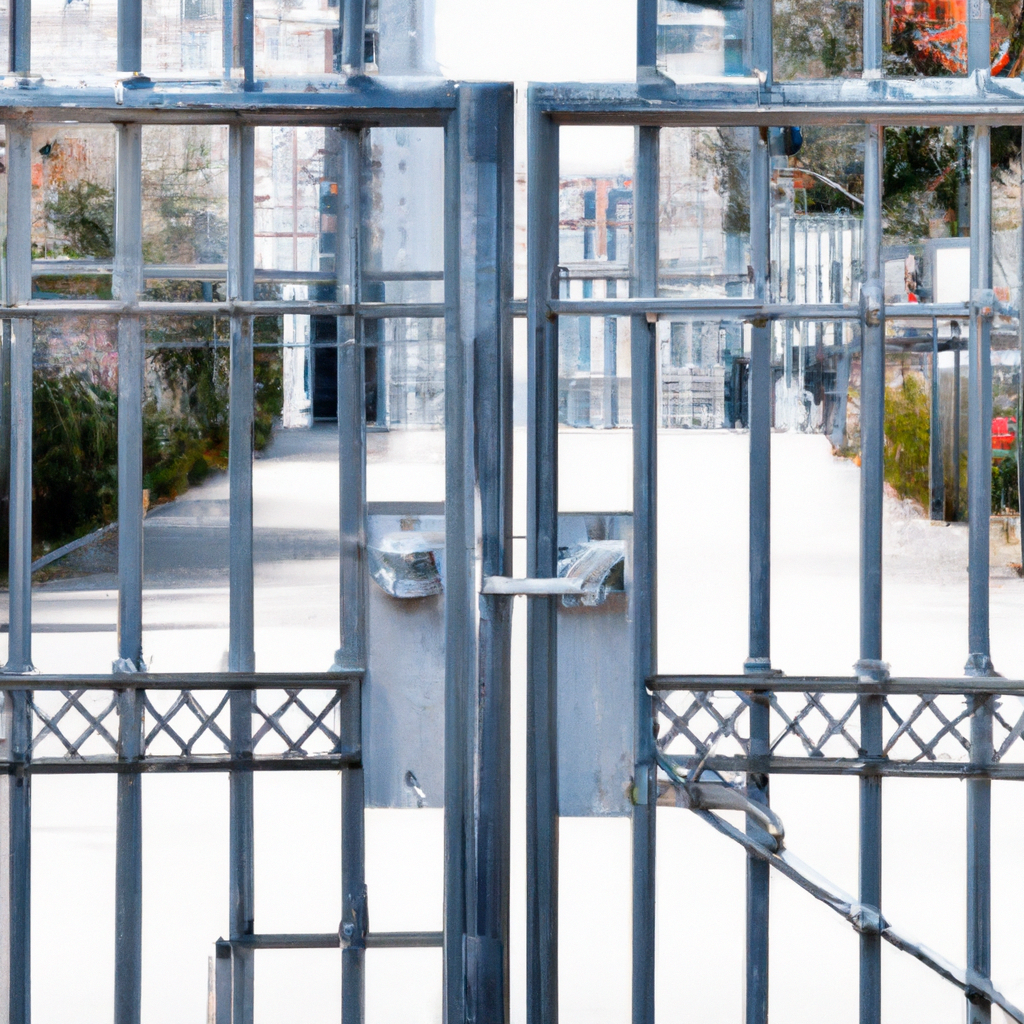Have you ever wondered how you can enhance the convenience and security of your smart home? Look no further than geofencing. Geofencing is a powerful technology that allows you to set virtual boundaries and trigger specific actions when you enter or leave those areas. In this article, we will explore the concept of geofencing and provide you with a comprehensive guide on how to leverage its potential in your smart home. So get ready to unlock a whole new level of automation and control as we dive into the world of geofencing!

What is Geofencing?
Geofencing is a technology that allows you to create virtual boundaries or “geofences” around a specific geographic area. These geofences are set up using GPS, Wi-Fi, or cellular signals, and when a device, such as a smartphone, enters or exits these boundaries, certain actions or functions can be triggered automatically. Geofencing is becoming increasingly popular in smart home automation as it offers a range of benefits, including enhanced security, energy efficiency, convenience, and personalization.
Definition of geofencing
Geofencing is the process of creating virtual boundaries around a specific geographic area. These boundaries can be customized and are set up using various technologies such as GPS, Wi-Fi, or cellular signals. When a device enters or exits these boundaries, predefined actions or functions can be triggered. These actions can include turning on or off lights, adjusting thermostat settings, activating security systems, and much more.
How geofencing works
Geofencing relies on the ability of devices to communicate with GPS satellites, Wi-Fi networks, or cellular towers. When a device with geofencing capabilities enters or exits a predefined geofence zone, it sends a signal to the smart home system. The smart home system then executes the predetermined actions associated with that particular zone. This technology allows for seamless automation and customization based on your location, providing a more convenient and personalized smart home experience.
Benefits of Geofencing in a Smart Home
Geofencing offers several advantages when integrated into a smart home system. Let’s explore some of the key benefits:
Enhanced security and safety
One of the significant benefits of geofencing in a smart home is enhanced security and safety. By setting up geofence zones around your property, you can receive notifications or trigger actions when someone enters or exits these zones. For example, if a family member enters the geofence zone, the system can automatically disarm the security system and unlock the door. On the other hand, if an unauthorized person enters the zone, the system can send an immediate alert to your smartphone and activate the security measures.
Energy-efficiency and cost savings
Geofencing can greatly contribute to energy efficiency and cost savings in a smart home. By leveraging the technology of geofencing, you can automatically adjust heating, cooling, and lighting settings based on your proximity to your home. For example, when you leave the geofence zone, the system can lower the thermostat, turn off unnecessary lights, and even switch off appliances to reduce energy consumption. Upon your return, the system can restore the settings to ensure your home is comfortable when you arrive.
Convenience and automation
Geofencing enables a higher level of convenience and automation in a smart home. With geofencing, you can automate various tasks based on your location. For instance, when you enter the geofence zone, the system can turn on lights, adjust the temperature, and even play your favorite music to welcome you back home. Similarly, when you leave the geofence zone, the system can automatically lock the doors, turn off lights, and arm the security system, providing peace of mind and eliminating the need for manual intervention.
Customization and personalization
Geofencing allows for customization and personalization of your smart home experience. With the ability to create different geofence zones, you can tailor specific actions or functions based on each zone. For example, you can set up a geofence zone in your living room that triggers the TV to turn on and the blinds to open when you enter, while a geofence zone in your bedroom can dim the lights and play relaxing music when you arrive. This level of customization ensures that your smart home caters to your specific preferences and needs.
Setting up Geofencing in Your Smart Home
To start using geofencing in your smart home, you need to follow a few steps to set it up correctly. Let’s go through the process:
Choosing the right geofencing technology
The first step is to choose the geofencing technology that best suits your needs. There are three main types of geofencing technologies: GPS-based, Wi-Fi-based, and cellular-based. GPS-based geofencing relies on satellite signals and is highly accurate, but it can drain your device’s battery faster. Wi-Fi-based geofencing uses the Wi-Fi network’s signal strength to determine your location, offering moderate accuracy. Cellular-based geofencing relies on the proximity of cellular towers and provides a balance between accuracy and battery life. Consider your requirements and choose the technology that aligns with your priorities.
Selecting compatible smart home devices
Once you have chosen the geofencing technology, you need to ensure that your smart home devices are compatible and capable of integrating with the chosen geofencing system. Check the specifications and capabilities of your existing devices or consider investing in new ones that support geofencing. This may include smart locks, security systems, thermostats, lighting systems, and more. Compatibility between your devices and the geofencing technology is crucial for seamless integration and automation.
Configuring geofencing settings
After selecting compatible devices, you need to configure the geofencing settings within your smart home system. This typically involves setting up the geofence zones, specifying the actions or functions associated with each zone, and customizing the notification preferences. Most smart home systems have user-friendly interfaces that allow you to define the desired settings according to your preferences. Take your time to set up the system correctly and ensure that the geofencing zones are accurately mapped to your home’s specific areas.
Creating geofence zones
Geofence zones are the virtual boundaries you establish around specific areas in and around your home. These zones determine the actions or functions that will be triggered when you enter or exit them. To create geofence zones, you typically need to open the smart home app or the geofencing platform and select the desired areas on a map. You can choose to create zones for different rooms, outdoor areas, or even specific areas within a room. Ensure that the size and shape of the geofence zones accurately reflect the corresponding physical areas.
Adding family members or authorized users
To fully enjoy the benefits of geofencing in your smart home, you may want to add your family members or authorized users to the system. This allows everyone to have their own personalized experience based on their location. Most smart home systems allow you to invite users and give them limited or full access to the geofencing features. Remember to inform the users about the geofence zones, the associated actions, and any specific instructions they need to follow for seamless automation and personalization.
Types of Geofencing Technologies
There are various types of geofencing technologies available, each with its own advantages and limitations. Let’s explore the three main types:
GPS-based geofencing
GPS-based geofencing relies on the Global Positioning System (GPS) satellites to determine the location of a device. It offers high accuracy and is ideal for outdoor use. GPS-based geofencing is commonly used for navigation and tracking applications. However, the downside of GPS-based geofencing is that it can drain the battery of mobile devices faster than other technologies.
Wi-Fi-based geofencing
Wi-Fi-based geofencing uses the signal strength of Wi-Fi networks to determine the device’s location. It offers moderate accuracy and is suitable for both indoor and outdoor use. Wi-Fi-based geofencing is less power-hungry compared to GPS-based geofencing, making it more suitable for battery-powered devices. However, its accuracy is dependent on the density of Wi-Fi networks in the area, which can affect its reliability.
Cellular-based geofencing
Cellular-based geofencing relies on the proximity of cellular towers to determine the device’s location. It provides a balance between accuracy and battery life. Cellular-based geofencing is widely used in urban areas where cellular towers are abundant. It is less power-intensive compared to GPS-based geofencing and can deliver reliable results in areas with strong cellular network coverage. However, it may be less accurate in remote or rural locations with limited tower density.

Using Geofencing for Enhanced Security
Geofencing can greatly enhance the security of your smart home. Here are some ways you can utilize geofencing for enhanced security:
Geofencing-enabled security systems
By integrating geofencing with your smart home security system, you can create a virtual perimeter around your property. When you or any authorized user enters or exits the geofence zone, the security system can automatically arm or disarm itself accordingly. This eliminates the need for manual input and ensures that your home is secured when you’re away and accessible when you return.
Automatic alarms and notifications
Geofencing can enable automatic alarms and notifications to keep you informed of any unusual activities. When an unauthorized person enters your geofence zone, the system can trigger an immediate alarm and send real-time notifications to your smartphone or other authorized devices. This allows you to take appropriate action promptly and enhances the protection of your home and loved ones.
Monitoring and remote surveillance
Geofencing can be used in conjunction with surveillance cameras and monitoring systems to enhance security. When you leave the geofence zone, the cameras can start recording, enabling you to monitor any suspicious activities remotely. Similarly, when you return to the geofence zone, the cameras can stop recording to ensure privacy. Geofencing allows for seamless integration of surveillance systems to provide you with peace of mind and a sense of security.
Geofencing for Energy Efficiency
Geofencing can contribute to energy efficiency in your smart home by automating various energy-saving measures. Let’s explore how geofencing can help you achieve higher energy efficiency:
Automated lighting control
Geofencing allows you to automate the lighting in your home based on your location. When you leave the geofence zone, the system can automatically turn off unnecessary lights to conserve energy. Conversely, when you enter the geofence zone, the system can turn on select lights to welcome you back. Geofencing takes away the need to manually control the lights and ensures that energy is not wasted when no one is present.
Smart thermostat integration
Integrating geofencing with your smart thermostat can optimize energy consumption and reduce utility bills. By setting up geofence zones, the thermostat can adjust the temperature based on your proximity to your home. When you leave the geofence zone, the thermostat can lower the temperature to save energy. When you enter the geofence zone, the thermostat can adjust the temperature to your preferred setting, ensuring a comfortable environment upon arrival.
Optimized energy consumption
Geofencing can help optimize energy consumption by allowing you to control specific appliances or devices based on your location. For example, when you leave the geofence zone, the system can automatically turn off kitchen appliances, such as the coffee maker or microwave, to save energy. When you return, the system can turn on selected appliances, ensuring they are ready for use. Geofencing enables efficient energy management and contributes to a greener and more sustainable lifestyle.
Geofencing for Convenience and Automation
Geofencing offers a host of convenient features and automation capabilities in your smart home. Here are some ways geofencing can make your life easier:
Automated entry and exit tasks
With geofencing, you can automate various tasks when you enter or exit your home. For example, when you enter the geofence zone, the system can automatically unlock the front door, turn on the lights, and adjust the thermostat to your preferred setting. Similarly, when you leave the geofence zone, the system can lock the doors, turn off lights, and activate the security system. Geofencing eliminates the need to manually perform these tasks, saving you time and effort.
Smart home routines and schedules
Geofencing allows you to create personalized routines and schedules for different geofence zones. For instance, you can set up a routine that activates when you enter the geofence zone during weekdays, turning on the lights, playing your favorite music, and displaying the day’s weather forecast. Geofencing enables a seamless transition between various tasks based on your location, ensuring a smooth and personalized smart home experience.
Voice-activated control
Geofencing can be integrated with voice assistants, such as Amazon Alexa or Google Assistant, to provide voice-activated control of your smart home. When you enter the geofence zone, you can use voice commands to control lights, thermostats, appliances, and more, without needing to interact with physical switches or screens. Voice-activated control adds an extra layer of convenience and hands-free operation to your smart home.
Customization and Personalization with Geofencing
Geofencing allows for customization and personalization of your smart home experience. Here’s how geofencing enables a tailored and personalized environment:
Individual user profiles and preferences
Geofencing enables individual user profiles and preferences within a smart home system. Each authorized user can have their own geofence settings, allowing for personalized automation based on their proximity. For example, you can set up custom geofence zones for family members, roommates, or guests, ensuring that their preferred actions or functions are triggered when they enter or exit the specific zones. Personalized profiles enhance the overall smart home experience.
Personalized smart home experiences
Geofencing allows you to create personalized smart home experiences tailored to your unique needs and preferences. For example, when you enter the geofence zone, the system can automatically adjust the lighting, temperature, and even play a personalized welcome message. Geofencing ensures that your smart home adapts to your specific requirements, providing an enhanced level of comfort and convenience.
Tailored notifications and alerts
Geofencing enables tailored notifications and alerts based on your location. You can set up notifications to receive alerts when family members enter or exit geofence zones, ensuring that you’re always aware of their whereabouts. Additionally, you can customize notifications for various events or actions triggered by the geofencing system. Tailored notifications and alerts keep you informed and connected to your smart home, offering a personalized and responsive experience.
Geofencing Challenges and Considerations
While geofencing offers numerous benefits, there are a few challenges and considerations to keep in mind:
Privacy concerns
Geofencing involves collecting and using location data, which can raise privacy concerns for some users. It is essential to choose a reputable smart home system that prioritizes data security and implements robust privacy measures. Understand the data collection and usage policies of the geofencing technology you choose and ensure that your personal data remains protected.
Accuracy limitations
Although geofencing technologies have improved significantly, there can still be limitations in terms of accuracy. Factors such as signal interference, building structures, or obstructions can affect the precision of geofencing. It’s important to set up geofence zones carefully and consider any potential inaccuracies. Regularly test and adjust the geofencing settings to ensure reliable performance.
Battery drain on mobile devices
Certain geofencing technologies, particularly GPS-based, can drain the battery of mobile devices faster due to the continuous use of location services. It is advisable to monitor the battery usage and consider optimizing the settings or using power-saving modes when necessary. Additionally, Wi-Fi-based or cellular-based geofencing technologies provide alternatives that are less power-hungry.
Environmental factors
Environmental factors, such as weather conditions or changes in signal availability, can impact the performance of geofencing. For instance, heavy rain, snow, or thick foliage can affect the accuracy of GPS-based geofencing. Similarly, Wi-Fi-based geofencing can be affected by the availability and strength of nearby Wi-Fi networks. Consider these environmental factors and their potential impact on geofencing performance when setting up your smart home system.
Potential Future Applications of Geofencing
Geofencing has the potential to revolutionize various industries and applications. Here are some potential future applications:
Integration with smart city infrastructure
Geofencing can be integrated with smart city infrastructure to enhance urban living. For example, geofencing could be used to automate street lighting based on pedestrian or vehicular movement. Geofencing can also enable automatic waste collection when residents enter or exit their homes, optimizing waste management efforts. The seamless integration of geofencing into smart city infrastructure can improve efficiency, sustainability, and overall quality of life.
Geo-targeted marketing and advertising
Geofencing can be utilized for geo-targeted marketing and advertising campaigns. Retailers can create geofence zones around their stores and send targeted advertisements or promotions to potential customers in the vicinity. This allows for more personalized and relevant marketing experiences, increasing engagement and driving sales. Geofencing can also be leveraged for location-based loyalty programs, offering discounts or rewards to customers when they enter specific zones.
Location-based services
Geofencing can enable a wide range of location-based services. For example, geofencing in healthcare can be used to track patient movements and send alerts when they enter or leave certain areas. Geofencing in transportation can provide real-time updates on traffic conditions and suggest alternative routes based on the user’s location. The potential applications of geofencing are extensive and can significantly improve efficiency and convenience in various sectors.
In conclusion, geofencing is an innovative technology that offers a multitude of benefits in the context of smart homes. From enhanced security and energy efficiency to convenience and personalization, geofencing has the potential to transform the way we interact with our homes. By understanding geofencing, selecting the right technology, and configuring the settings appropriately, you can create a smarter, safer, and more efficient living environment. Embrace the power of geofencing in your smart home and unlock a whole new level of automation and customization.










